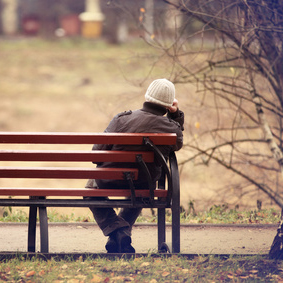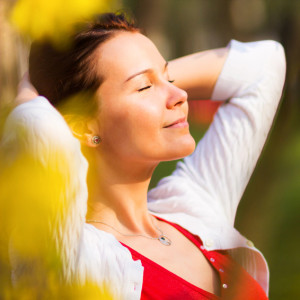- Calls to this hotline are currently being directed to Within Health, Fay or Eating Disorder Solutions
- Representatives are standing by 24/7 to help answer your questions
- All calls are confidential and HIPAA compliant
- There is no obligation or cost to call
- Eating Disorder Hope does not receive any commissions or fees dependent upon which provider you select
- Additional treatment providers are located on our directory or samhsa.gov
Seasonal Affective Disorder as a Co-Occurring issue with Eating Disorders
Contributor: Leigh Bell, writer for A Center for Eating Disorders
 You’ve heard about the winter blues. Maybe, you’ve even experienced them. When temperatures drop and days shorten, we get tired earlier, stay indoors more often, and maybe feel some of Jack Frost’s funk.
You’ve heard about the winter blues. Maybe, you’ve even experienced them. When temperatures drop and days shorten, we get tired earlier, stay indoors more often, and maybe feel some of Jack Frost’s funk.
It’s much more than this for roughly 15 million Americans who have Seasonal Affective Disorder, or SAD, a depressive episode experienced in fall and winter months because, researchers believe, people get less sunlight. Some experience SAD symptoms in the warmer, rather than, colder months, but this reversed condition is quite rare.
The Relationship Between SAD and Eating Disorders
SAD has a multi-faceted, and still somewhat unexplored, relationship with eating disorders. Sixty to 90 percent of those with SAD are women with an average onset at age 20 — a population also very prone to eating disorders.
In fact, SAD is overrepresented in people with eating disorders and alcoholism; and studies show symptoms of bulimia, in particular, tend to worsen in the colder months.
“Admissions to our treatment center are up at this time for all types of eating disorders,” said Beth McMurray, co-founder and co-clinical director of A Center for Eating Disorders, ACED, where clinicians are trained to treat chronic eating disorders. “We purposely engage the milieu in outside activities as much as possible from January to March.”
Wintertime and the Effect of Sunlight
 Wintertime can also exacerbate symptoms of clinical depression, for which almost half of people with eating disorders meet the criteria, according to the National Association for Anorexia and Associated Disorders.
Wintertime can also exacerbate symptoms of clinical depression, for which almost half of people with eating disorders meet the criteria, according to the National Association for Anorexia and Associated Disorders.
Nobody truly knows what causes SAD, but reduced exposure to sunlight is the predominant theory. It’s a domino effect, really. We know the body produces more melatonin when it’s dark. This helps us sleep and manage our body’s internal clock, or circadian rhythm, which is also the victim of jet lag.
More darkness from September to May can create more melatonin, which, researchers theorize, throws off our body’s ability to regulate sleep, mood, and appetite.
Chemicals in the Brain
Research also reveals those with SAD have lower of levels of serotonin in winter months than in warmer ones.
Vitamin D could be another culprit, though also related to sunlight exposure. Vitamin D in the body shifts based on available sunlight, according to recent findings from a research partnership between University of Georgia, the University of Pittsburgh, and the Queensland University of Technology in Australia.
“Rather than being one of many factors, vitamin D could have a regulative role in the development of SAD,” said Alan Stewart, research leader and associate professor at the UGA Department of Education.
A Mix of Genetics and Environment
Yet, SAD, like eating disorders, is a mix of genetic propensity and environment. While a “few minutes of sunlight exposure each day should be enough for most people to maintain an adequate vitamin D status,” Stewart said, it may not be enough for those with SAD.
The disorder itself is difficult to separate from the winter doldrums and even other co-occurring disorders. For a SAD diagnosis, the DSM-V requires depressive episodes during the last two consecutive winters, as well as:
- Depression that begins and ends during a specific season every year.
- No episodes of depression during the season in which you experience a normal mood.
- Many more seasons of depression than seasons without depression over the lifetime of your illness.
People with SAD experience some or all of the following symptoms:
- Lethargy, fatigue, decreased energy
- Less interest in socializing and outside activities previously enjoyed
- Feelings of guilt, worthlessness, helplessness
- Irritability
- Lack of concentration, focus, memory
- Sluggishness, lethargy
- Increased appetite, craving for carbohydrates
- Changes in weight
These symptoms mirror some of those in eating disorders. In fact, people diagnosed with SAD report seasonal mood patterns, appetites, and attitudes about body image very similar to people with bulimia.
“I’ve definitely noticed a spike in behaviors with clients struggling with bulimia during the winter months,” said McMurray, of ACED. “For those who have actually overcome binge/purge behaviors, the urges to act out often become quite strong during this time of year.”
Light Therapy
 Some research has even treated bulimia, somewhat successfully, with a light-therapy regime commonly used to treat SAD — though the positive results from light exposure are longer-lasting in SAD than bulimia.
Some research has even treated bulimia, somewhat successfully, with a light-therapy regime commonly used to treat SAD — though the positive results from light exposure are longer-lasting in SAD than bulimia.
Light therapy does alleviate SAD symptoms about 50-80 percent of the time, with greater success if light therapy is tailored to a person’s individual sleep-wake cycle.
Antidepressant medication and cognitive-behavioral therapy are also used to treat SAD, and appear more effective when accompanied with light therapy.
Still, it’s not time to scrap the sunscreen and hit the tanning bed. SAD, like anything else, is about balance and awareness, especially when it comes to eating disorders and the colder months of the year.
Community Discussion – Share your thoughts here!
- Magnusson, A., & Partonen, T. (2005). The diagnosis, symptomatology, and epidemiology of seasonal affective disorder, CNS Spectrums, 10(8), 625-634.
- Blouin A, Blouin J, Aubin P, Carter J, Goldstein C, Boyer H, Perez E. (1992) Seasonal patterns of bulimia nervosa. American Journal of Psychiatry, 49(1), 73–81.
- Vitamin D deficiency, depression linked in UGA-led international study. (2014, Dec. 2). Retrieved Jan. 15, 2015 from http://news.uga.edu/releases/article/vitamin-d-deficiency-depression/.
- Gartlehner G, Hansen RA, Morgan LC, Thaler K, Lux LJ, Van Noord M, Mager U, Gaynes BN, Thieda P, Strobelberger M, et al. (2011) An open trial of light therapy for women with seasonal affective disorder and comorbid bulimia nervosa. American Journal of Psychiatry, May;151(5), 744-750.
- Blaszczak, Jessica. (2013, Jan. 30). 10 Things You Didn’t Know About Seasonal Affective Disorder. Retrieved Jan. 25, 2015 from http://psychcentral.com/lib/10-things-you-dont-know-about-seasonal-affective-disorder/0002
The opinions and views of our guest contributors are shared to provide a broad perspective of eating disorders. These are not necessarily the views of Eating Disorder Hope, but an effort to offer discussion of various issues by different concerned individuals.
Last Updated & Reviewed By: Jacquelyn Ekern, MS, LPC on February 12th, 2015
Published on EatingDisorderHope.com

